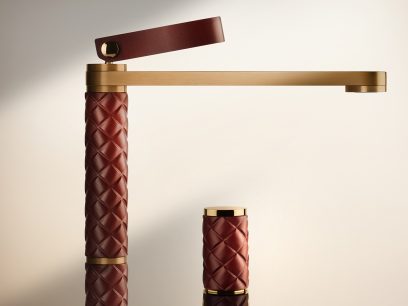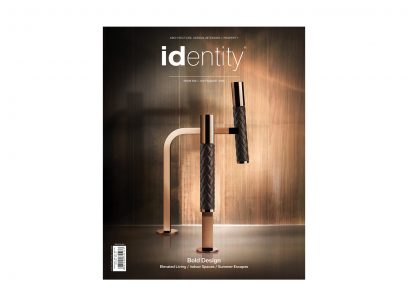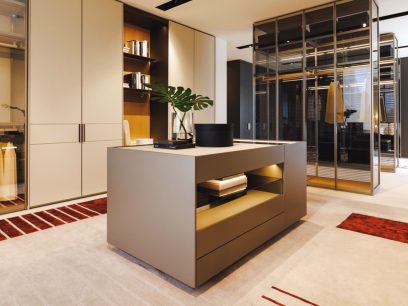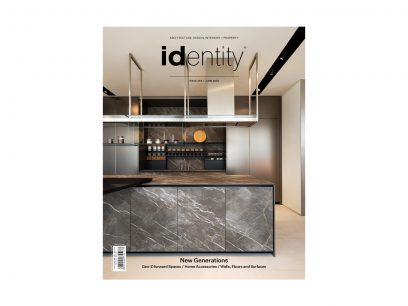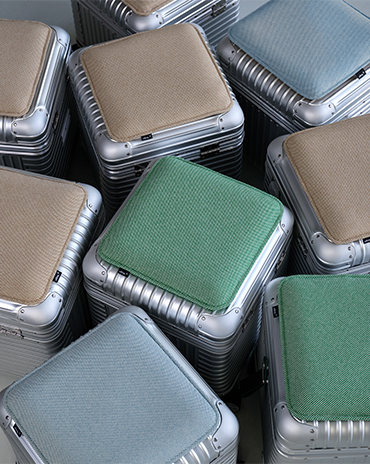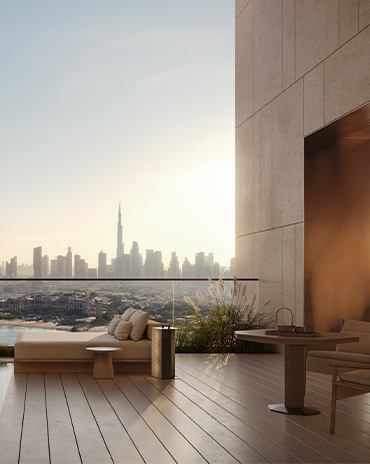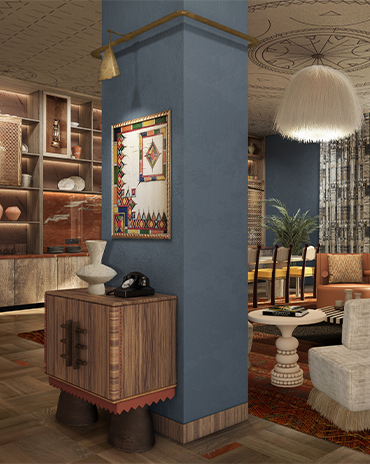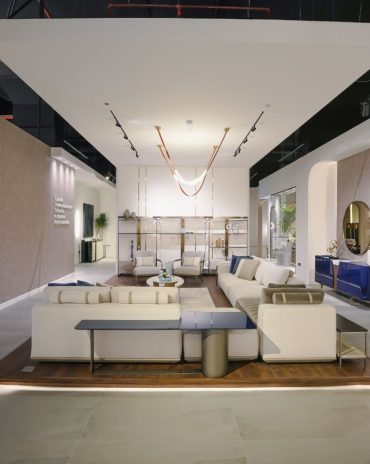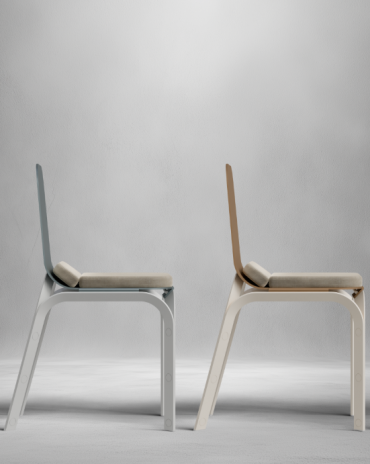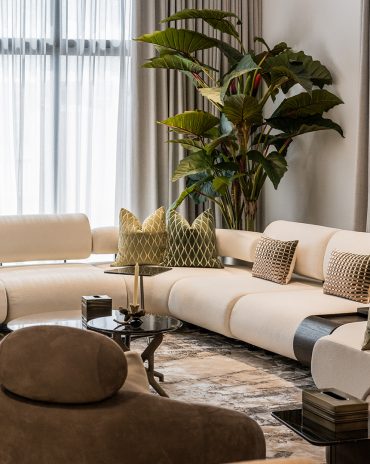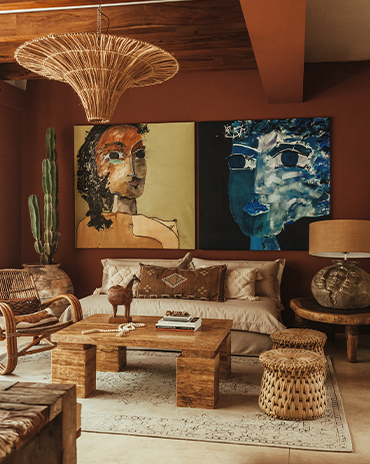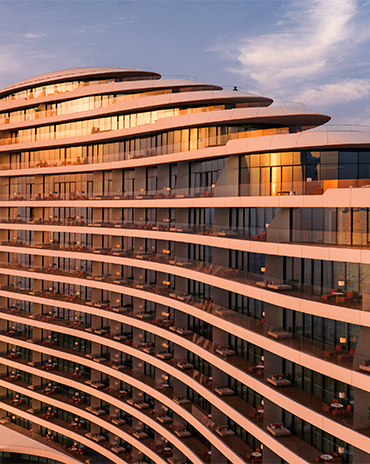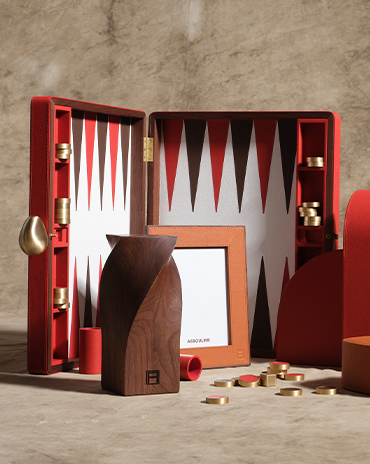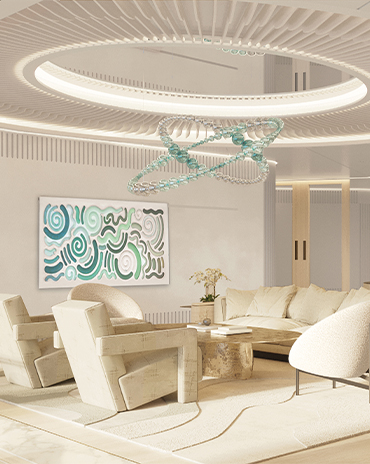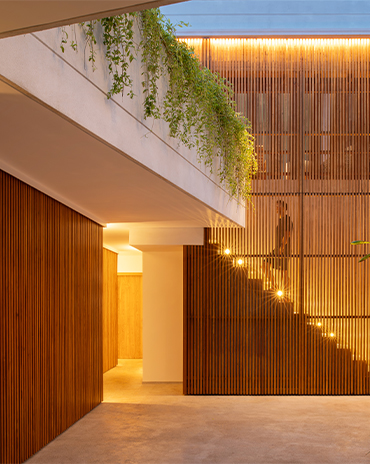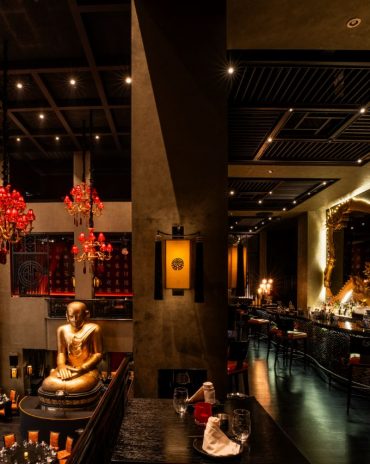Copyright © 2025 Motivate Media Group. All rights reserved.
OMA’s scenography for the Islamic Arts Biennale depicts an enlightening survey of Islamic cultural traditions and artistic practices
The 120,000 square metre exhibition space takes over the SOM-designed Western Hajj Terminal
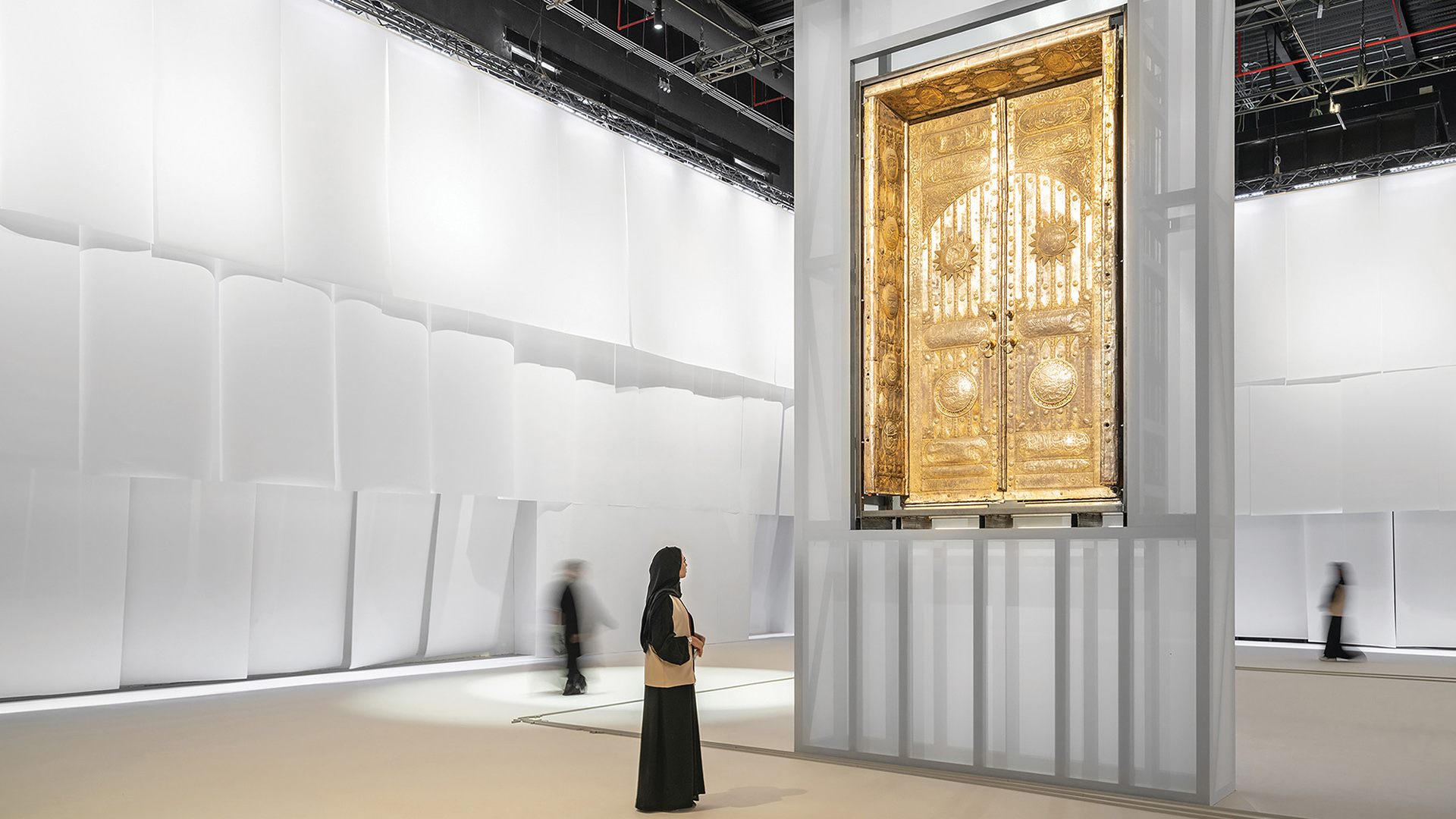
Dutch architecture firm OMA (Office of Metropolitan Architecture) is no stranger to the Middle East, with numerous high-profile projects already under its belt – such as the master plan for Waterfront City in Dubai, the Airport City master plan in Doha, Concrete at Alserkal Avenue, and the Qatar National Library in Doha. Its latest endeavour is a temporary installation for the world’s first Islamic Art Biennale in Jeddah, Saudi Arabia.
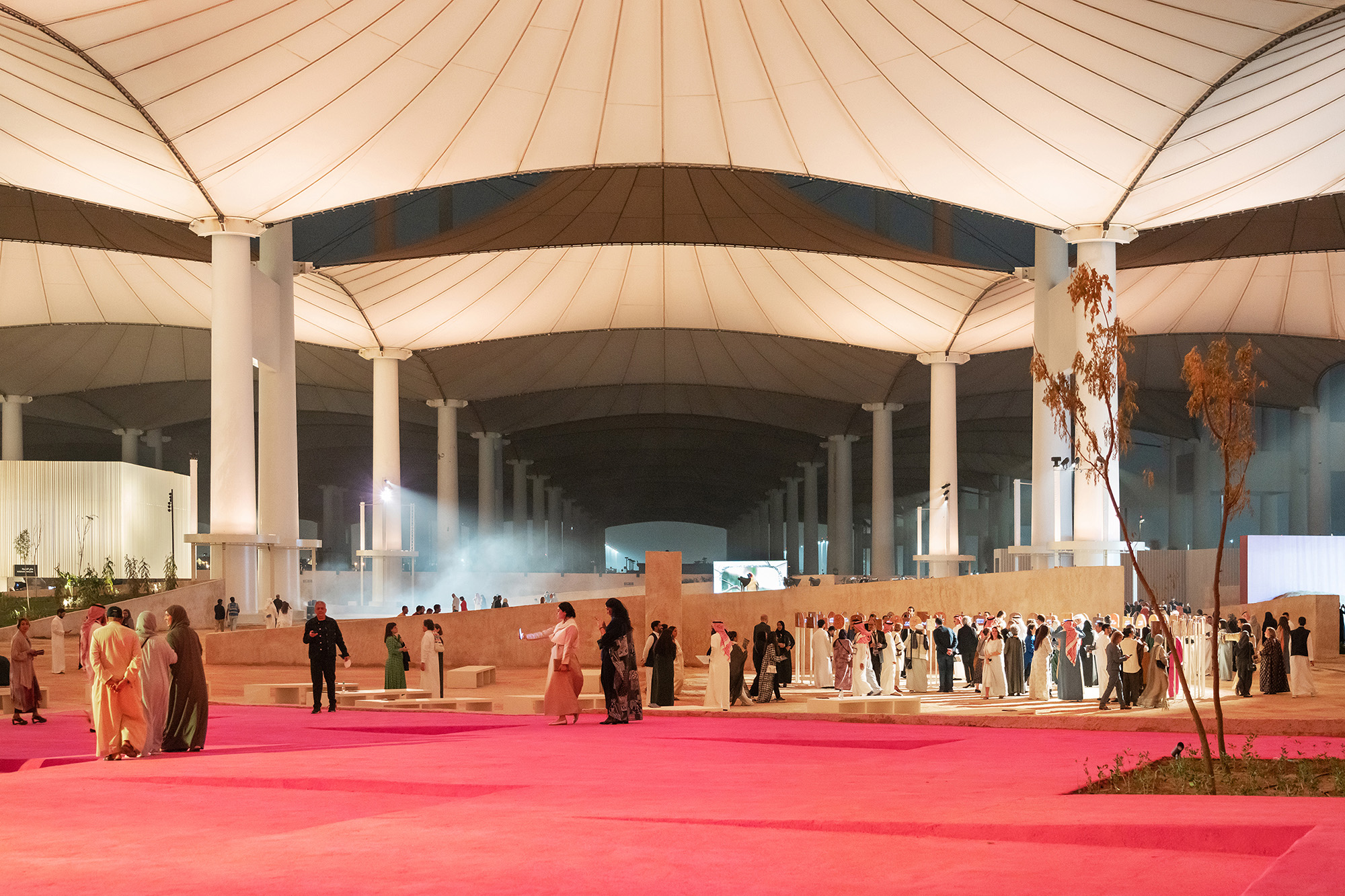
The Diriyah Biennale Foundation’s ambitious project marks OMA’s first built work in the Gulf country; one that is unprecedented in its undertaking, since no other global event has previously presented a grouping of Islamic-inspired arts in this manner, spanning architecture, design, visual arts and historic objects.
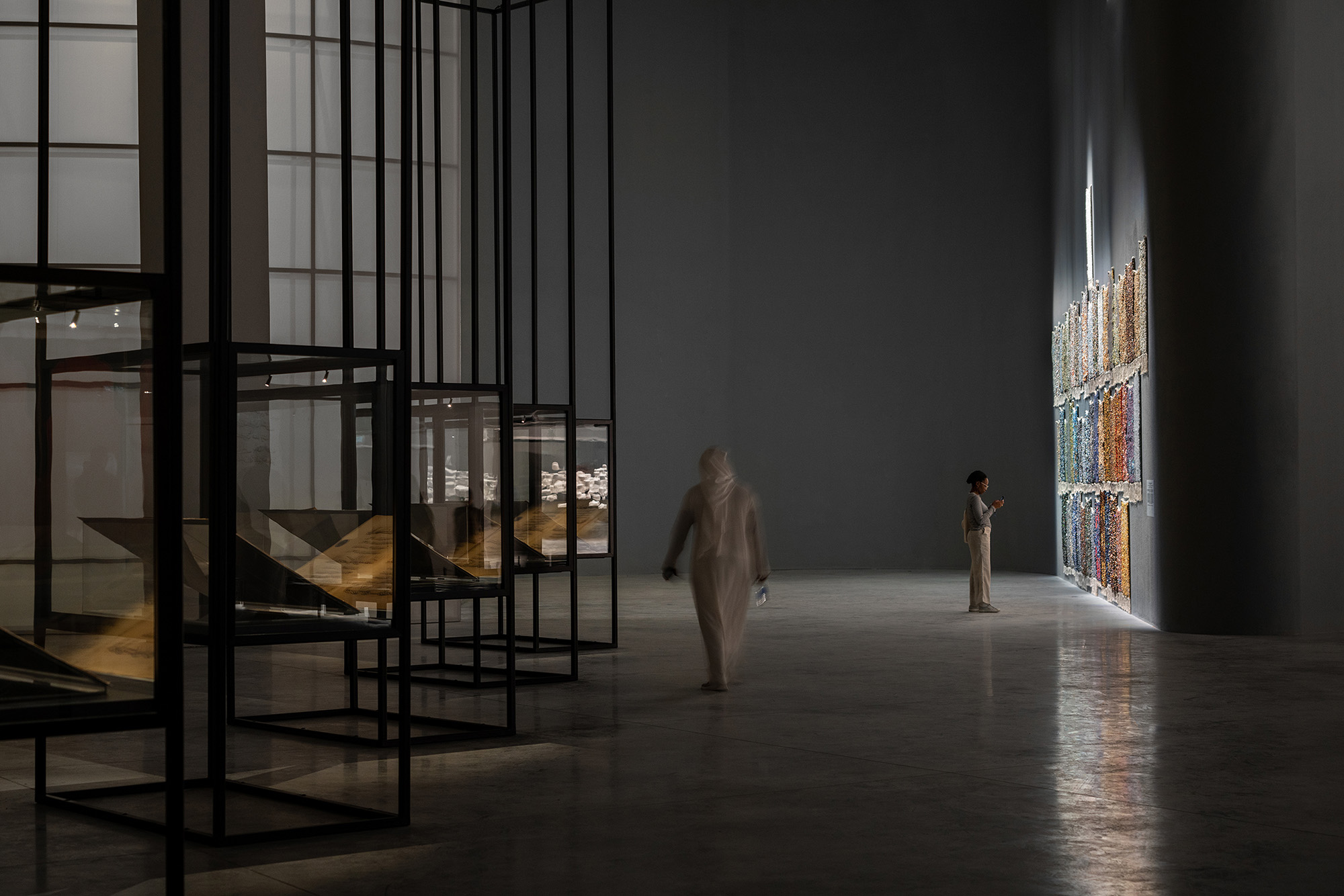
These are being displayed over 120,000 square metres of exhibition spaces, taking over Jeddah’s Western Hajj Terminal, which was designed by Skidmore, Owings & Merrill (SOM) – the winner of the Aga Khan Award in 1983. The Biennale is set within the city of Jeddah, which for centuries has represented a convergence point for cultural exchange, and within a venue that acts as a port of entry for millions of pilgrims on their spiritual journey.
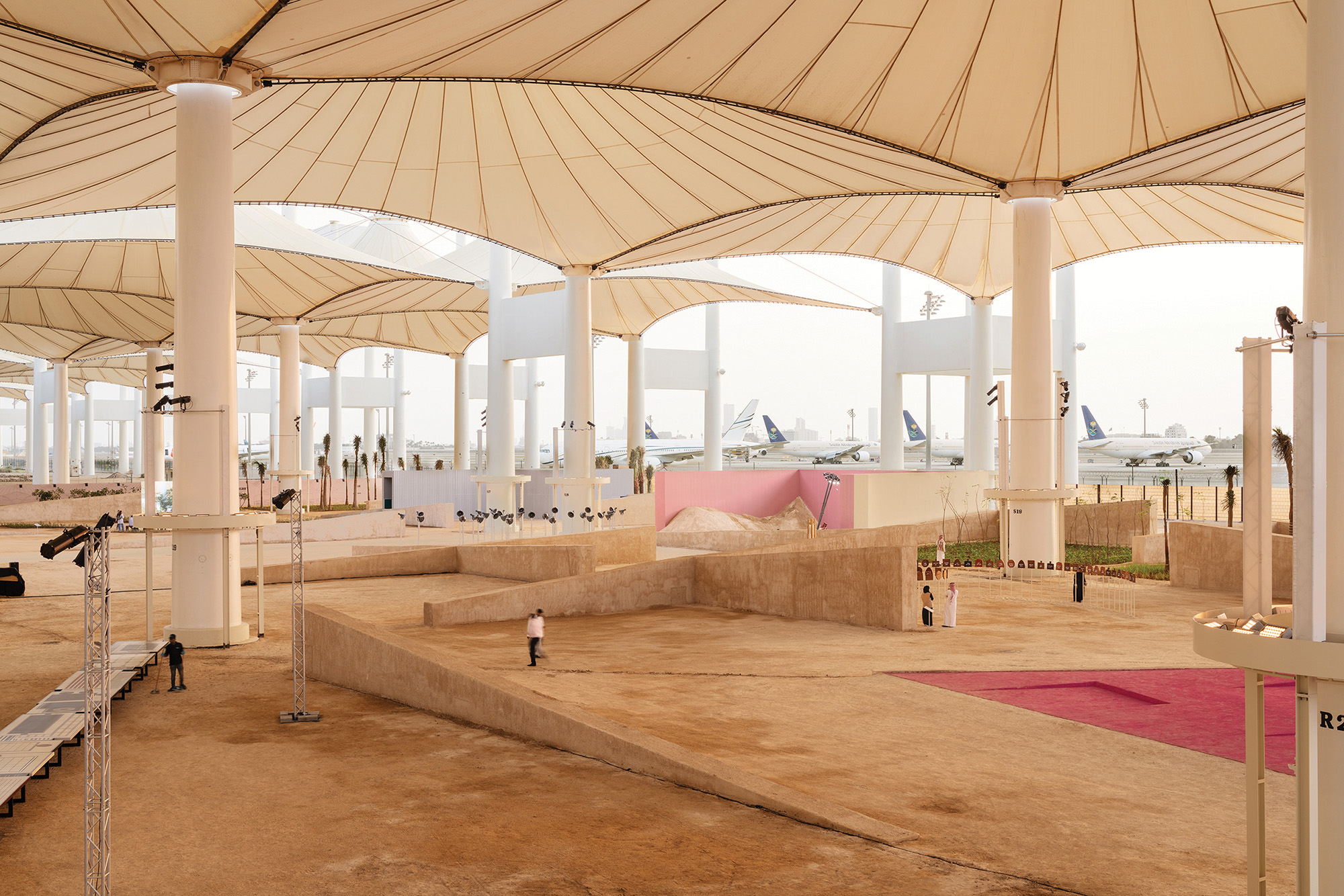
“The Biennale is an opportunity to discover and learn about Islamic culture. More than 200 ancient objects are on display, some of which have never been seen by the larger public,” says Iyad Alsaka, partner at OMA. “There are artworks by contemporary artists from Saudi Arabia and other countries in the Middle East and northern Africa, [as well as] countries like the UK and South Africa, giving a new dimension to the timeless rituals of Islam,” he adds. The Western Hajj Terminal exists at the axis of history and ingenuity itself, being a pioneering project at the time of its opening. OMA builds upon this architectural contribution and reimagines it as a cultural venue, drawing upon the existing canopy design and elevating it with a modern, dynamic twist.
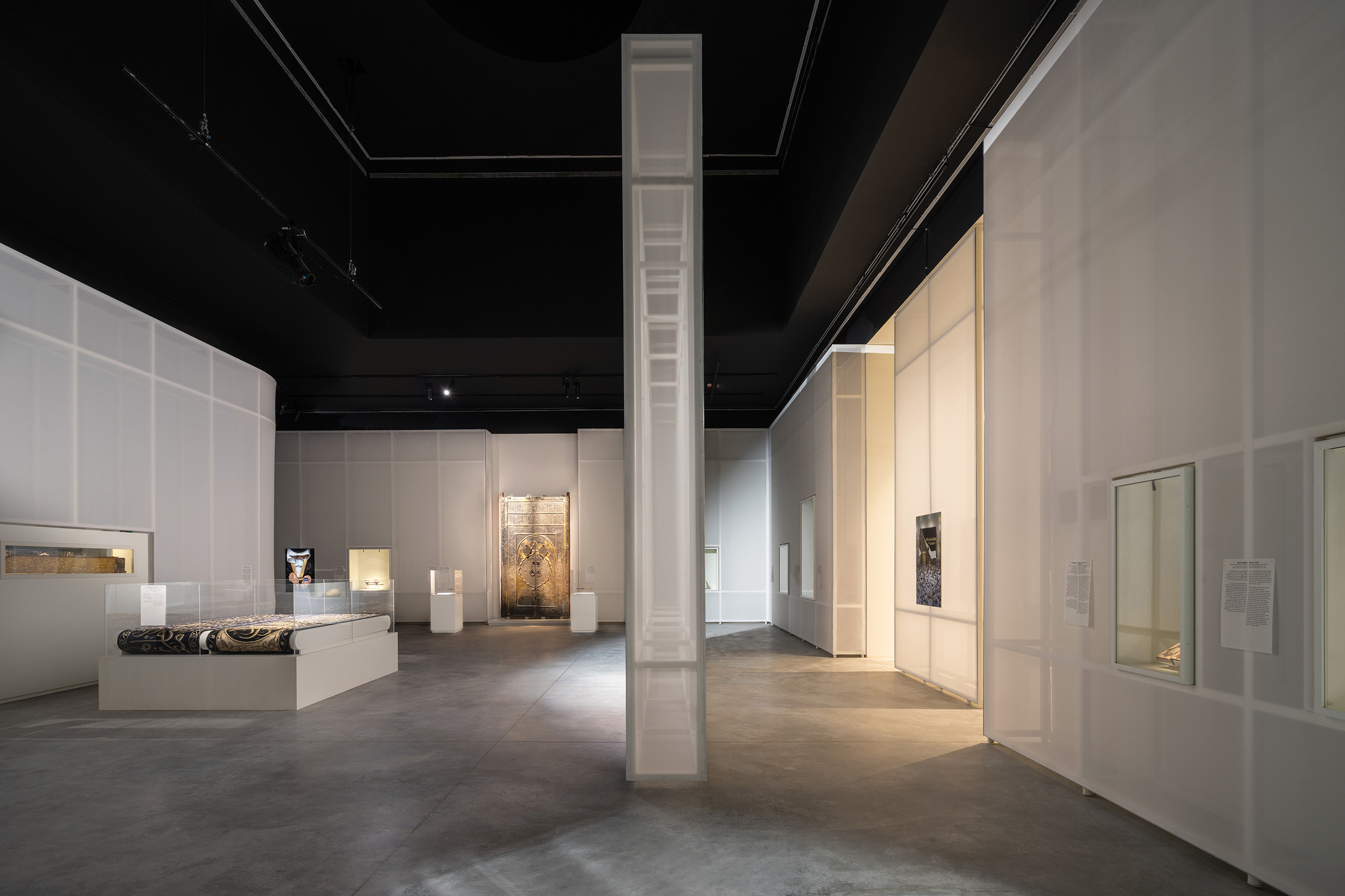
“Our scenography design aims to create a space that complements the cable-stayed, fabric-roof of the iconic Hajj Terminal – a pivotal piece of modern architecture known to Muslims around the world – literally reinventing it as an umbrella for Islamic Arts,” explains Kaveh Dabiri, an associate at OMA.
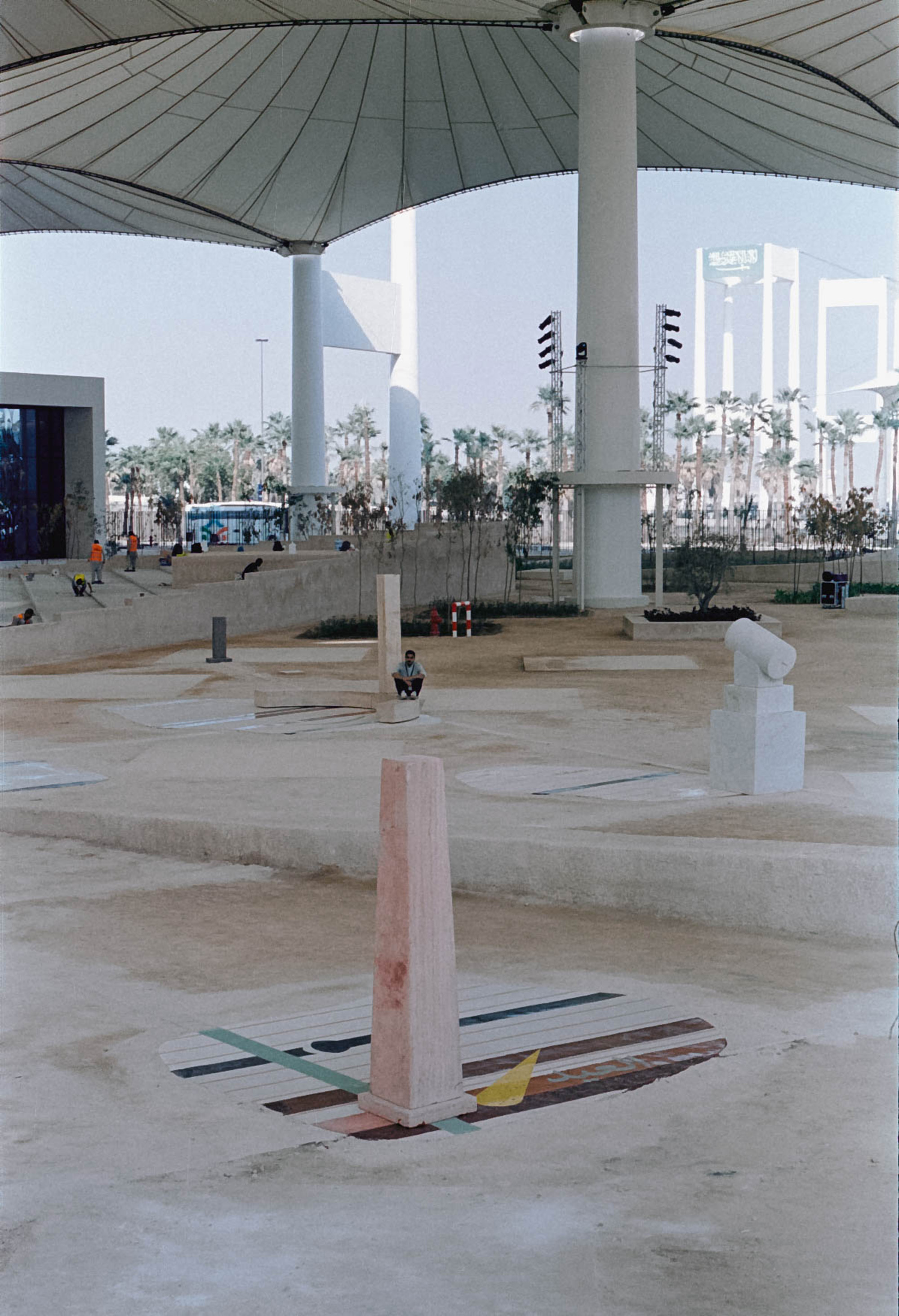
Under the curatorial theme ‘Awwal Bait’, which translates to ‘First House’, the Biennale explores how Islam’s most sacred sites – Makkah (the destination of the annual pilgrimage) and Madinah (the place where Prophet Mohamed is buried) – has inspired Muslims around the world to create a sense of belonging, bringing unity in a plural world. OMA’s design divides the exhibition space into two complementary areas, with indoor galleries and outdoor installations creating a dialogue between scared sites and rituals.
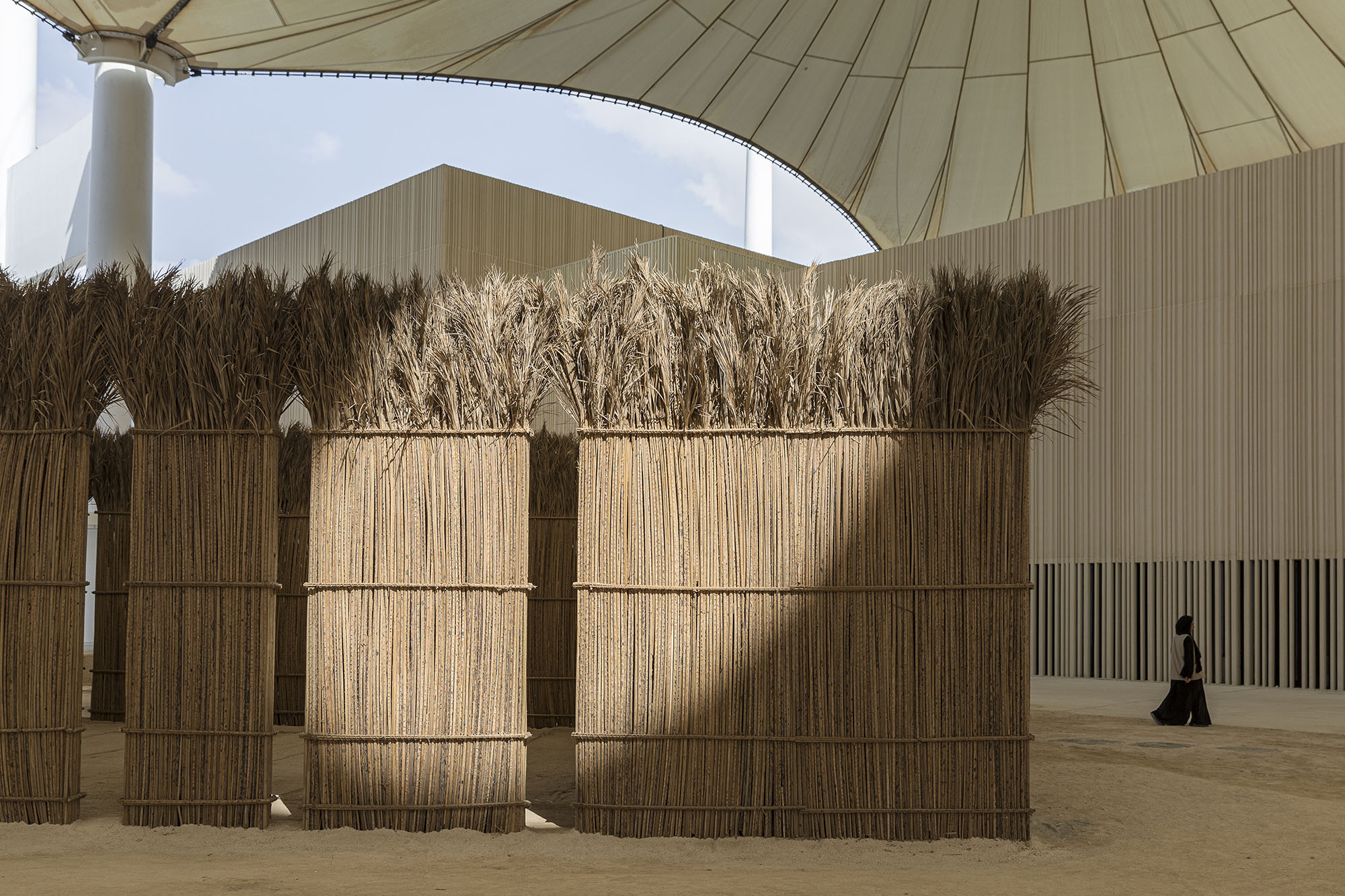
The first scenography is a cleverly devised trajectory through a sequence of newly built galleries, inspired by the concept of the ‘Qiblah’ (the direction Muslims face when they pray). The exhibition manifests gradually in a journey from darkness to light, starting in a dimly lit room filled with 17th-century astrolabes – used to calculate the direction of the ‘Qiblah’ – and concluding in a bright space hosting an installation which incorporates the First Saudi Door of the ‘Ka`bah’ in Makkah, installed during the reign of King Abdul Aziz. Through a linear sequence of four galleries, the visitor explores key rituals in the Islamic faith, and what it means to be Muslim today.
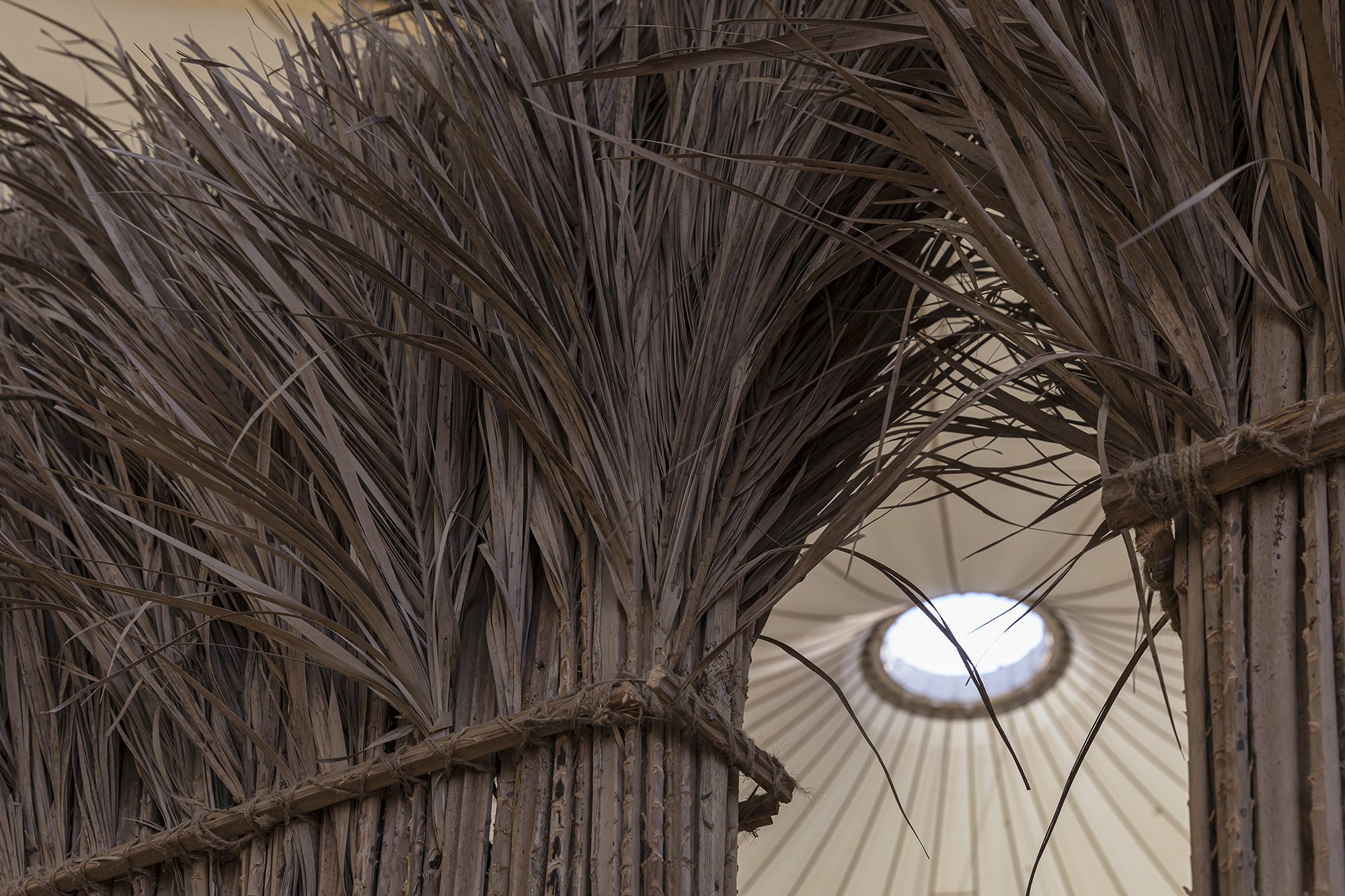
The second area is outdoors, under the terminal’s open canopy where OMA has created a desert-like landscape that pays homage to the journey of ‘Hijrah’ – Prophet Mohamed’s journey from Makkah to Madinah. The landscape consists of slopes and slanted walls of varying heights, arranged in relation to the geometry of the existing structure, creating a sense of exploration throughout one’s visit. “The spaces we created are meant to offer a calming and meditative experience, with only objects or works of art in the spotlight,” Dabiri explains. Additionally, two freestanding pavilions act as reference points in the open landscape, exhibiting rare artefacts from Makkah and Madinah.
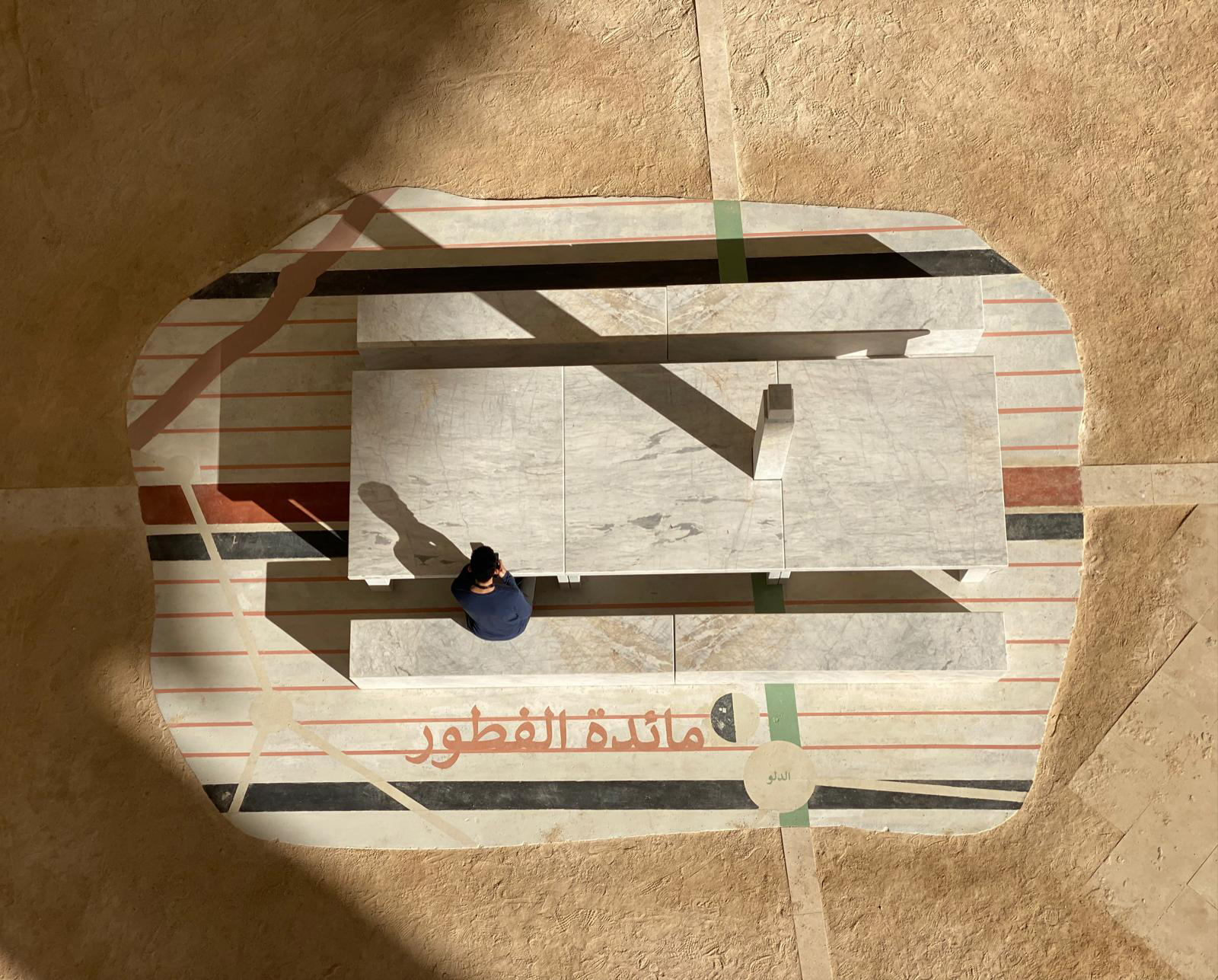
In contrast to the sandy atmosphere outside, the installations in the two pavilions are embedded with a bright, soft diaphanous screen that wraps the perimeter of the walls. The effect is meditative and mystical. “This is an historic moment not just for Saudi Arabia but for the entire Muslim world,” says Sumayya Vally, artistic director of the Biennale and principal of Johannesburg-based architectural studio Counterspace. “At its essence, this Biennale is about giving contemporary objects a home by giving them a lineage, and giving historic objects a home by giving them a future.”
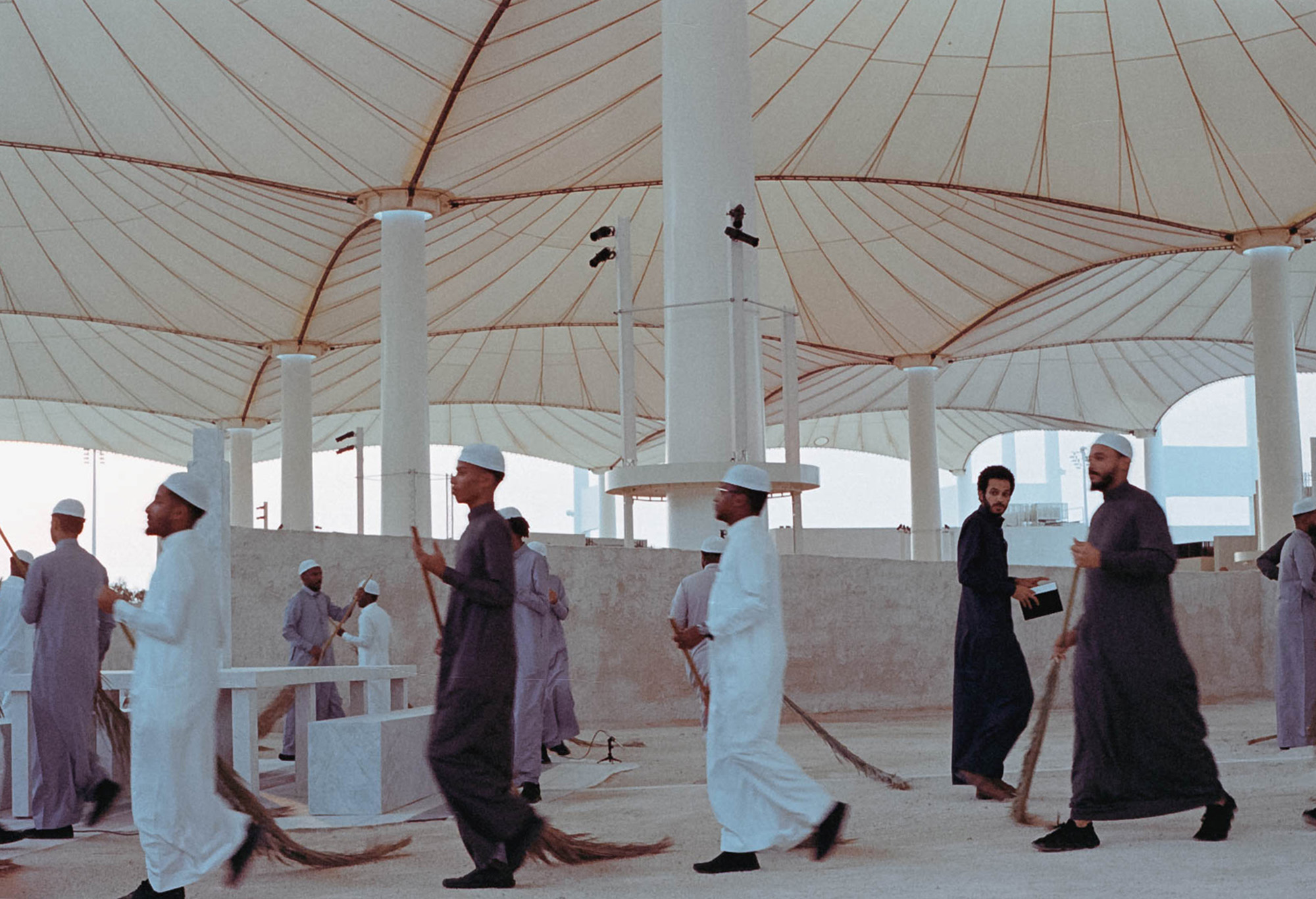
“I worked tirelessly with OMA to direct this vision,” she adds. “They have spectacularly created the exact journey I had envisioned, of the visitor moving across scales and atmospheres from darkness to light – reminding us of the presence of God and the constancy of our rituals in building our spiritual home at various phases and times of our lives.”
The Islamic Arts Biennale will run until 23 April 2023 at the Western Hajj Terminal in Jeddah, Saudi Arabia
The Latest
Designing Movement
RIMOWA’s signature grooved aluminium meets Vitra’s refined design sensibilities
A Sense of Sanctuary
We interview Tanuj Goenka, Director of Kerry Hill Architects (KHA) on the development of the latest Aman Residences in Dubai
Elevated Design
In the heart of Saudi Arabia’s Aseer region, DLR Group has redefined hospitality through bold architecture, regional resonance and a contemporary lens on culture at Hilton The Point
Turkish furniture house BYKEPI opens its first flagship in Dubai
Located in the Art of Living, the new BYKEPI store adds to the brand's international expansion.
Yla launches Audace – where metal transforms into sculptural elegance
The UAE-based luxury furniture atelier reimagines the role of metal in interior design through its inaugural collection.
Step inside Al Huzaifa Design Studio’s latest project
The studio has announced the completion of a bespoke holiday villa project in Fujairah.
Soulful Sanctuary
We take you inside a British design duo’s Tulum vacation home
A Sculptural Ode to the Sea
Designed by Killa Design, this bold architectural statement captures the spirit of superyachts and sustainability, and the evolution of Dubai’s coastline
Elevate Your Reading Space
Assouline’s new objects and home fragrances collection are an ideal complement to your reading rituals
All Aboard
What it will be like aboard the world’s largest residential yacht, the ULYSSIA?
Inside The Charleston
A tribute to Galle Fort’s complex heritage, The Charleston blends Art Deco elegance with Sri Lankan artistry and Bawa-infused modernism
Design Take: Buddha Bar
We unveil the story behind the iconic design of the much-loved Buddha Bar in Grosvenor House.

